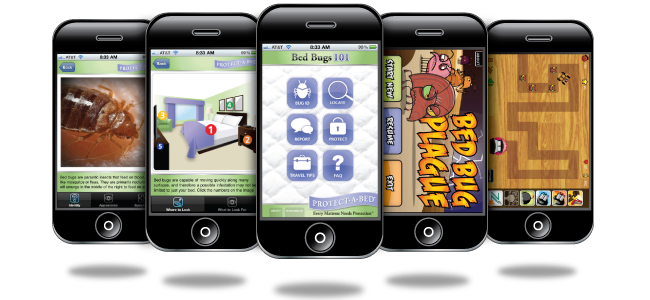Every once in a while, it’s important to write about things that are hot. (It keeps the blog numbers up.) Well, hydraulic fracking, Justin Beiber and bedbugs… yes, bedbugs are all very hot and in the news again. While the D’s and the R’s sort out the nuances of cutting $14 trillion or so from the U.S. federal budget over the next few centuries, we still have to deal with the day to day challenges of living on this planet. In Pennsylvania and New York at least, the hot news — according to the New York Times — is the radioactive water that is reportedly being forced from deep below the surface of the earth as a means of releasing natural gas reserves:
“The relatively new drilling method — known as high-volume horizontal hydraulic fracturing, or hydrofracking — carries significant environmental risks. It involves injecting huge amounts of water, mixed with sand and chemicals, at high pressures to break up rock formations and release the gas.”
“With hydrofracking, a well can produce over a million gallons of wastewater that is often laced with highly corrosive salts, carcinogens like benzene and radioactive elements like radium, all of which can occur naturally thousands of feet underground. Other carcinogenic materials can be added to the wastewater by the chemicals used in the hydrofracking itself.”
Of course, the essence of those two paragraphs will be the source of numerous heated discussions between environmentalists and the gas and oil lobbyists until this issue can be sorted out. In the meantime? Well, that’s the question du jour.
On a lighter note, my five year old grandchild, Nina, is madly in love with Justin Beiber. She knows every lyric from every one of his songs and regularly either dances or does gymnastic flips to his music. On Saturday, she, her brother, sister and I worked to clean up their two car garage sized playroom. She turned on the Karaoke Machine and let it rip. We were all dancing and singing to the Bieb as we put the toys away, cleaned up the miniature kitchen, folded baby doll clothes and stacked their books.
 Imagine my shock when one of my Google news alerts appeared spouting the fact that young Justin suddenly had become violently ill at one of his concerts in Manila, then quickly returned to the stage. He had been diagnosed with a bad chest infection prior to the show, but insisted on performing, having tweeted before the show, “Sick as a a dog… But the show must go on.” As a non-medical/non-science healthcare guy, the diagnosis made me a little curious, (remember, I’m a musician, too), but Yahoo Answers cleared things up for me with this patient testimonial: “I’ve spent so many years of my life convincing myself that I have emetophobia, because when I was about 11, I was sick from a chest infection and I threw up…” So, there you have it: Justin is not the only person who gets sick from being sick. So, relax, Nina, he’s going to be okay.
Imagine my shock when one of my Google news alerts appeared spouting the fact that young Justin suddenly had become violently ill at one of his concerts in Manila, then quickly returned to the stage. He had been diagnosed with a bad chest infection prior to the show, but insisted on performing, having tweeted before the show, “Sick as a a dog… But the show must go on.” As a non-medical/non-science healthcare guy, the diagnosis made me a little curious, (remember, I’m a musician, too), but Yahoo Answers cleared things up for me with this patient testimonial: “I’ve spent so many years of my life convincing myself that I have emetophobia, because when I was about 11, I was sick from a chest infection and I threw up…” So, there you have it: Justin is not the only person who gets sick from being sick. So, relax, Nina, he’s going to be okay.
Now, some additional disconcerting news. After having personally survived a bedbug attack at a top-notch hotel in a major U.S. city last year, I read with trepidation that it has recently been discovered that MRSA infection has now been associated with the scratching that comes after the bed bug bites. This dangerous, antibiotic-resistant bacteria (usually acquired from hospital visits or things like high school wrestling mats), is a strain of the bacteria Staphylococcus aureus which is called Community Associated MRSA or CA-MRSA. Because it is resistant to oxacillin, penicillin, amoxicillin and other antibiotics, it is not to be ignored. My medical friends tell me that the best treatment for bed bug bites is to keep the area clean, use antibiotic ointments or gel and keep a close eye on the bite to ensure that it doesn’t become infected.
So, all of you frackers, Bieberbots and bedbug-dreaders …should have a sip of some Grey Goose or Courvoisier. They’re not radioactive, may calm your fear of tossing your cookies, and would probably – in the right quantities – kill bedbugs…or at least make you stop caring if they didn’t. And, if you still want to learn more…well, there’s an app for that.







